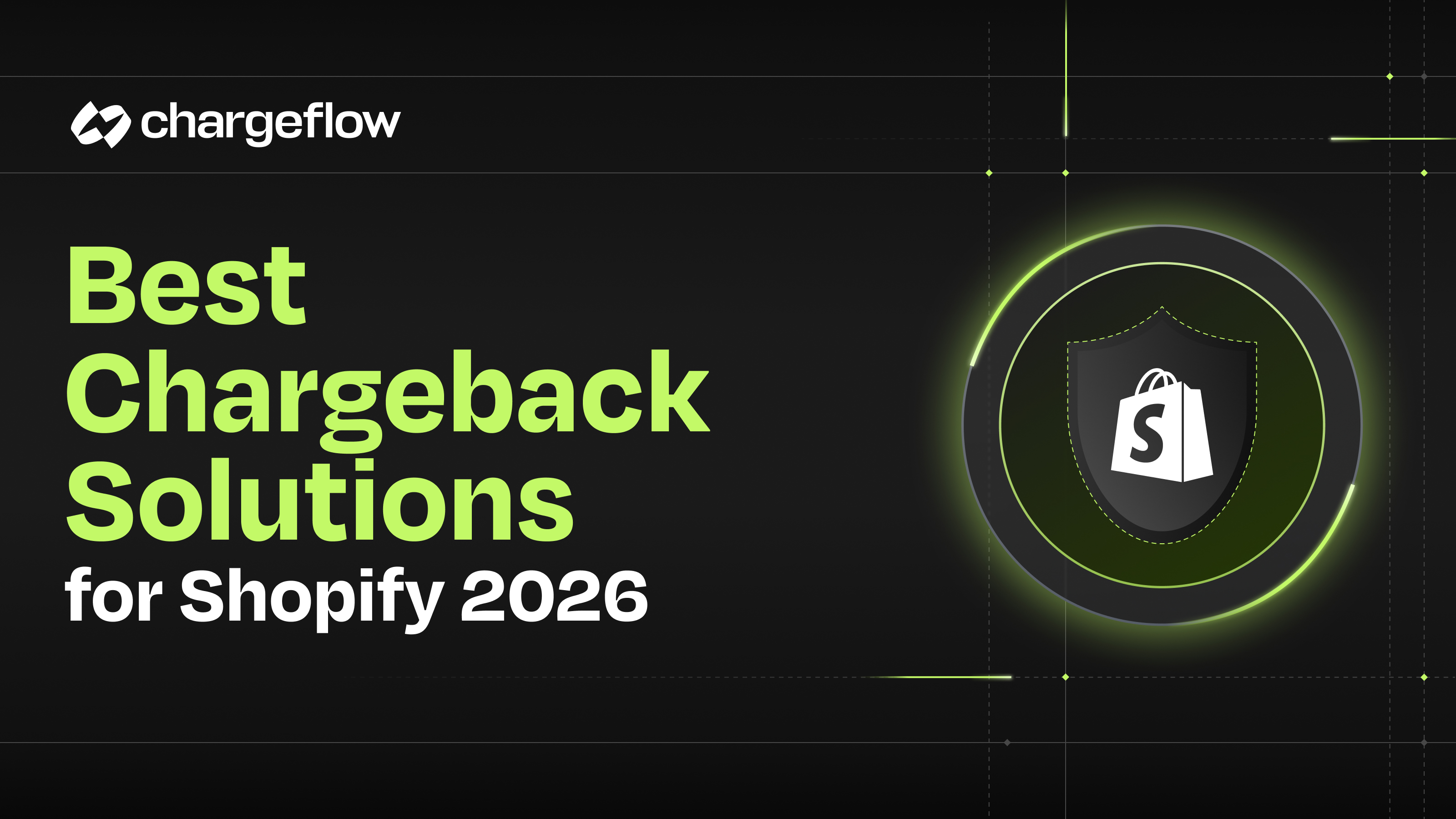5 Ways to Improve Your Return Policy and Prevent Chargebacks

Chargebacks?
No longer your problem.
Recover 4x more chargebacks and prevent up to 90% of incoming ones, powered by AI and a global network of 15,000 merchants.
Improve your return policy, so customers can return products directly to you instead of filing a chargeback. Learn more from this insightful piece.
If customers can’t find your return policy or your order return process is too complicated, they’ll bypass you entirely and go straight to the bank for a chargeback.
But there's more.
Friendly fraud is the leading cause of chargebacks. 81% of customers who file chargebacks do so out of convenience.
Hence, the more complicated your return process, the more likely your customers will skip it altogether and jump straight to a chargeback.
It’s crucial to have an easy-to-understand, user-friendly return policy.
5 Strategies to Improve Your Return Policy to Reduce Chargebacks
Make it easy for customers to return or exchange a product directly through your site instead of turning to a chargeback.
.jpeg)
1. Make Your Return Policy Easy to Understand
Your return policy needs to be well-written and easy to understand. 66% of customers read the return policy before purchasing. If customers can’t quickly figure out how to resolve issues with you directly, they will likely go to the bank for a chargeback.
Write a user-friendly return policy:
- Use concise sentences and short paragraphs.
- Keep your wording simple without confusing jargon.
- Break up the page using bolding, bullet lists, and headers.
- Have a third party review your return policy and give you feedback.
For example, take a look at Zappos’ online return policy. Their return policy is written and includes links to more details if customers want additional information.
2. Display Your Return Policy Clearly
Once you’ve created the perfect return policy, make sure people can find it.
Include links to your return policy in easy-to-find places:
- Website footer
- Product pages
- Checkout page
- Order confirmation emails
The easier it is to find your return policy, the better. If customers can’t easily find your return policy, they may feel they have no choice but to file a chargeback.
Make sure to display your return policy in a way that’s impossible to miss to prevent misunderstandings.


3. Adhere to Product Return Laws and Regulations
To prevent chargebacks, carefully check the regulations for every credit card company you accept and your local laws relating to returns. Depending on the location and industry, there may be rules regarding minimum time limits and how your customers must be informed of your return policy.
For example, many US states have laws regarding return and refund policies - some related to cancellations, such as hotel reservations or digital products, and some focused on ensuring customers see the return policy.
Some examples of return policy regulations include:

Take the time to review your local product return laws and regulations and ensure you comply with them accordingly.
4. Have a Generous Return Policy
The more flexible your return policy, the lower the risk of chargebacks. If your policy is too strict and someone doesn’t qualify for a refund, they are more likely to commit friendly fraud and issue a chargeback.
Offering a flexible return policy enables more customers to request a refund or exchange directly from you instead of issuing a chargeback. For non-returnable products such as intimate apparel, ensure your customers are informed that the sale will be final before completing the transaction.
Ways to make your return policy more flexible:
a: Extend Your Return Window
63% of customers expect a return window of 30 days.
If customers feel entitled to their money back and your return window has passed, they might turn to a chargeback. Consider extending your return window. Statistics show that even with a longer return window, you will get back your returned products in a short time.

Offering an extended return window gives your customers more time to decide whether they want to keep their order or return a product that doesn’t fit their needs.
For example, L.L. Bean offers a whole year for customers to return items. Until 2018 they offered lifetime returns.
L.L. Bean’s example shows that setting some kind of limit is essential - even if you offer a wide return window, make sure it’s clearly defined. Note that there’s no one right way to set your return window - your return window will depend significantly on your industry and customers.
b: Offer Free Return Shipping
Free return shipping can incentivize people to buy from you rather than a competitor, and removing the cost barrier in the return process will improve the chances of your customers getting a return instead of a chargeback.
The long-term benefits for your store are worth the extra cost of covering the return shipping:
- Chargeback fees can often cost you more than you’d pay for return shipping.
- You may be able to resell returned products. With a chargeback, your earning potential disappears.
- Returns don’t damage your chargeback-to-transaction ratio.
- 79% of online shoppers expect return shipping to be free.
By offering a generous return policy and an easy return process, you can increase your customers' confidence in buying and returning with you and thus prevent chargebacks.
5. Support Various Types of Returns
When you offer multiple return options, such as exchanges, store credit, or gift cards, your customers will be more likely to return a product rather than file a chargeback.
Take into account that the more accommodating your return process is, the lower the risk of chargebacks.
BONUS TIP: Get Professional Help
Updating your return policy can help prevent chargebacks, but it is just one of many steps you can take. You can use various tools and tactics at different stages of the customer journey to reduce chargebacks.
Many parts of your eCommerce business can be automated, freeing you up to focus on doing what you do best - build your growing business. An automated returns management system is one of the best ways to simplify your returns process. Automating your returns makes life easier for you and your customers and gives you more control over your returns.

You can also prevent chargebacks by using an automated chargeback management solution. You can make informed decisions with extensive data and tools without needing manual labor or guesswork.
Use Your Return Policy to Reduce Chargebacks
Reduce chargeback by making your return policy simple, transparent, and flexible.
Making it easier for your customers to return or exchange products directly through you reduces the chances of them turning to chargebacks to solve their issues.
Rebecca Fox is ReturnGO’s Content Marketing Manager. With over five years of experience in the digital marketing world, she is passionate about creating useful and effective content that gives business owners the knowledge and tools they need to succeed.

Chargebacks?
No longer your problem.
Recover 4x more chargebacks and prevent up to 90% of incoming ones, powered by AI and a global network of 15,000 merchants.






























.png)








